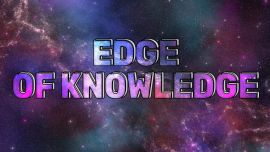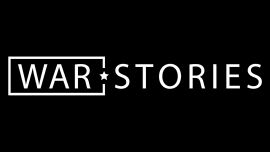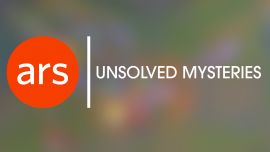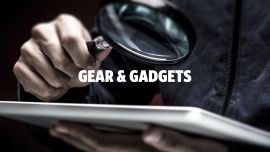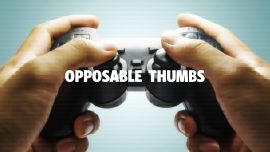Ars Technica Videos
- Go to ArsTechnica.com
-
Subscribe to 'Ars Technica' on YouTube to keep up with all of our latest videos and shows.
When autocomplete results are available use up and down arrows to review and enter to select.
Myst: The challenges of CD-ROM | War Stories
Cyan Worlds co-founder Rand Miller goes behind the scenes of the development of one of the best selling PC games of all time, Myst. The HyperCard-developed title ran into some snags when trying to run on the CD-ROM format. Rand and his brother, Robyn, compressed the image and audio data as much as they could so the game could run smoothly on 1x CD-ROM drives.
Released on 1/28/2020
Transcript
00:00
[dramatic music]
00:07
You'd think that
00:10
[laughs] normal people would feel
00:14
an immense amount of pressure over this.
00:17
We were way over budget, way over time.
00:19
I should not have been sleeping at night.
00:22
There was so much on the line.
00:23
Hi, I'm Rand Miller, the co-creator of Myst.
00:26
We set out to make the real world of Myst
00:29
and ran smack into the real world limitations of CD-ROM.
00:32
[fire roaring and crackling]
00:41
I got into gaming when I was in junior high,
00:45
and I'm not young, so this was a long time ago.
00:48
The games I got into on computers
00:51
were not what people know today.
00:55
What really hooked me was a lunar lander game.
00:58
I remember it to this day.
01:00
There were no graphics to it.
01:02
This was a line of text on a CRT screen
01:05
that said how high I was off the lunar surface,
01:08
you know, just a number,
01:09
how fast I was going, and how much fuel I had left,
01:11
and then a question mark.
01:13
You put in how much fuel you want to burn,
01:14
you hit return,
01:16
and rinse, repeat, till you basically crash on the surface.
01:20
In junior high, a college friend took me
01:22
to the University of New Mexico computer center,
01:25
I saw that on the screen, and it was magic.
01:28
This was magic to me.
01:31
And he said, There are other games,
01:33
and you can make your own games.
01:36
This, you write programs to do this.
01:38
It changed everything I wanted to do from that point on.
01:42
Cyan was probably formed in mid-'80s,
01:45
that we used that very,
01:49
what we thought at the time would be a very open-ended name,
01:52
so we could get into anything we wanted.
01:53
My brother Robyn and I had this idea of a blue sky,
01:57
and we liked that, so we picked that as a name.
01:59
I wrote to my brother and said,
02:00
We should do this interactive book.
02:02
We should do a book that's amazing.
02:04
He was an artist, a musician,
02:05
knew enough about computers to be dangerous,
02:08
and I knew enough about art and music to be dangerous,
02:09
and it was a great team.
02:12
We started with The Manhole.
02:14
He drew the first page of a book,
02:16
which was a manhole cover
02:18
and a fire hydrant in the background.
02:20
And what happened was,
02:21
was this really interesting transition for us,
02:24
and it was what shaped us into what we were.
02:27
He didn't turn the page.
02:28
We didn't, after drawing the manhole cover
02:30
and the fire hydrant,
02:31
we didn't care about what was on the next page.
02:33
We cared about, Well, what's under the manhole cover,
02:36
and what's, you know, what is that fire hydrant about?
02:39
And so, the pictures that I got from him were,
02:42
the manhole cover slid aside,
02:44
and a vine growing up to somewhere,
02:46
and a picture closer to the fire hydrant
02:49
with a little door, a tiny little door in the bottom.
02:52
And these were just still images that he sent me
02:55
that we linked together, and we suddenly realized
02:57
that we weren't doing an interactive book,
03:00
we were making a world.
03:01
I think it was one of the first entertainment CD-ROMs,
03:04
if not the first entertainment CD-ROM.
03:06
So Cosmic Osmo was how we evolved.
03:10
It was a very natural transition.
03:12
We had learned so much about our platform, HyperCard,
03:15
in the meantime, doing Manhole,
03:16
and about what this world did well, Manhole,
03:19
and what it didn't do well.
03:22
Cosmic Osmo was a chance for us
03:23
to push things a little further,
03:25
and it still is very close
03:28
to both my brother's and my heart.
03:30
It was a tour de force of what I think
03:34
at that point HyperCard could do
03:36
and what computers could do.
03:37
Everything was interactive.
03:38
And to this day,
03:40
I would be doing projects in HyperCard if it was available.
03:44
It was so, such an elegant, amazing tool
03:48
that I don't think Apple understood
03:51
even how to market that product.
03:53
At its core, HyperCard was,
03:57
just picture a stack of cards,
03:59
stack of, a virtual stack of cards
04:02
that you could put a button on any card,
04:06
an invisible button on any card.
04:08
If somebody clicked on that button,
04:09
it would go to another card.
04:11
And you could draw a picture on a card,
04:12
draw a picture of, say, a fire hydrant,
04:17
and put an invisible button on it,
04:19
and when you click on it,
04:21
you go to a picture of a close-up of that fire hydrant.
04:24
That then evolved into what we do.
04:27
A link of still pictures.
04:29
There was a Japanese company
04:31
who got in touch with us.
04:32
They had loved The Manhole,
04:34
and they want to do something for an older audience.
04:37
They wanted to fund something for an older audience.
04:39
And we had this meeting with them where they said,
04:41
You know, can you do something for an older audience?
04:44
And we were like, Oh, hell yeah.
04:46
We can do something for an older audience, you bet.
04:49
With a proposal that was like seven pages,
04:51
and the proposal for Myst, the seven pages,
04:54
if it was seven, I don't remember,
04:56
it was basically top-down maps of every island
04:58
with little notes on it, that was it.
04:59
We didn't know how you did a game proposal.
05:02
We would just, kinda did our thing up till then.
05:04
They said, Okay, we'll give you,
05:07
I think we asked for $250,000 at the time,
05:11
and they said, Now, this is gonna be good,
05:13
like '7th Guest.'
05:14
Will this be better than '7th Guest'?
05:15
And if you don't know 7th Guest,
05:17
you should look it up.
05:18
It was one of the products that had,
05:20
it wasn't done at the time,
05:21
but it was being touted.
05:22
They were showing some previews for it
05:24
as this media project on CD-ROM,
05:26
and we went, Oh yeah, yeah, you bet.
05:28
And from there, we just jumped in and started building it.
05:32
Myst was a very natural evolution
05:37
from our earlier worlds, as I've mentioned,
05:39
but it was also a leap.
05:41
Because what we'd learned doing our earlier worlds
05:45
is that you could embed pieces of story in your game.
05:48
We didn't know that at all in The Manhole.
05:52
Catherine, my love, I have to leave quickly.
05:55
Something terrible has happened.
05:57
But we realized we liked it as we moved forward,
05:59
and those pieces of story
06:01
felt like they kept you honest.
06:03
They kept the world somehow realistic
06:06
because everything in the real world has a story to it.
06:08
It's there for a reason.
06:09
We realized when we were ready
06:11
to do something for an older audience
06:13
that that was important.
06:15
That we needed to have stories to things.
06:18
And there was no way to do this on floppy disk.
06:21
It wouldn't fit.
06:22
And part of the very appeal of this was that
06:24
we had made a game that you don't die,
06:27
you don't level, you don't start over,
06:29
and so the only way we were gonna give people
06:32
the amount of time for their money for the game
06:35
was just sheer brute force amount of real estate
06:39
that had to be available for them to explore,
06:41
and CD-ROM was our answer to that question, if it worked.
06:46
Very early, then, we got our hands
06:49
on some 3D rendering software.
06:52
Another one of those pivotal moments in,
06:53
where you realized the future's different from now on,
06:57
because I remember,
06:58
and I'm sure Robyn has the same recollection
07:01
of sitting down with that software,
07:03
putting a ball on the screen,
07:04
putting a table, putting a light source,
07:05
it's all in wire frame, very simple,
07:07
and clicking the Render button,
07:09
and out comes something
07:10
that generates shadows and reflections,
07:12
and the refraction through glass,
07:15
and, Oh, this is different now.
07:18
We can do this.
07:19
We can render the images for 'Myst.'
07:21
We don't have to hand-draw these.
07:23
We realized that this would be in color.
07:25
This would be the first product we would do
07:27
that would only play on color machines.
07:29
There would be no black-and-white option.
07:31
[laughing] Robyn's machine was a black-and-white Macintosh,
07:35
but it had been hacked with a clip.
07:37
It didn't have any expansion slots.
07:39
You'd take off the back and you get this crazy board
07:42
that was a clip that would clip onto the processor,
07:45
all the pins of the processor,
07:46
and give you a monitor that was color.
07:49
That's how we started Myst,
07:51
with an early Mac SE, I think.
07:53
It was hacked to do color.
07:55
[dramatic music]
07:58
The problems we faced were really interesting,
08:03
and the largest of those was
08:07
this crazy idea of CD-ROM.
08:11
It was relatively new,
08:13
and what that meant is
08:14
that most people had just basically something like,
08:18
called a single-speed CD-ROM.
08:20
It was streaming at 150K per second, which is nothing.
08:25
150K per second is all you could get
08:29
off that single-speed disc,
08:30
and we had to make the game work for that.
08:33
The streaming wasn't even the main problem.
08:35
The seek time was the biggest.
08:37
People with lots of money had double-speed drives,
08:40
or I think, I don't even think quad-speed drives
08:42
had been invented yet.
08:43
But it doesn't matter
08:44
because we have to sell to the most basic people.
08:47
And it's not even a sell thing.
08:49
We wanted people to experience this
08:50
who had the basic multimedia computer.
08:54
Not knowing for sure
08:55
if this was even gonna work,
08:57
if it was gonna be playable.
08:59
How long would it take on Myst Island,
09:02
when you were on the dock and you clicked
09:04
to move from one picture to the other?
09:06
And side note, I worked at a bank
09:09
for years before doing this,
09:11
and we had this psychological kind of play
09:13
that I probably heard at some IBM conference
09:17
that said, Two seconds is how long you want people to wait
09:20
before they get feedback
09:21
from clicking something on the screen
09:23
or from hitting a button on the screen,
09:25
and after two seconds,
09:26
they start to recognize that they're not getting something.
09:28
They start to wonder if it's them or if it's the machine,
09:31
and so you kind of want to keep it to that.
09:32
Well, we had no idea if we were gonna move,
09:34
how long was it gonna take?
09:36
It might have taken 10 seconds
09:37
to move to the next image.
09:39
We just didn't know.
09:40
CD-ROM burners were not readily available.
09:44
They were thousands of dollars for a CD-ROM burner.
09:46
We didn't have one.
09:48
It was our publisher, Broderbund, that may have had one,
09:50
and we didn't even use it
09:52
until we were well into the project.
09:54
Those were interesting times with no testing whatsoever.
09:58
Robyn was generating images.
10:00
I mean, this was how we had always worked,
10:03
it was just on steroids at this point.
10:05
He was at his house generating images, feeding them to me,
10:09
and I was linking those together in HyperCard.
10:12
And these are all full-color images that Robyn's sending.
10:14
So he had a really powerful Mac with a lot of memory
10:18
and a lot of hard drive space.
10:20
I had a really powerful Mac with a lot of memory
10:22
and a lot of hard drive space.
10:24
And we were still working in mud.
10:31
It was incredibly slow,
10:32
especially for Robyn, rendering those images.
10:35
It was wonderful times
10:36
when Apple would come out with a new machine,
10:37
and we thought we might be able to afford it
10:39
because we could add that to our collection.
10:43
What would happen is,
10:47
Robyn would stack up
10:49
[laughs] a lot of images to be rendered.
10:54
In other words, he couldn't be rendering as he's working.
10:56
He had to stack those up in a queue,
11:00
and at some point, we added another computer.
11:02
If he got a new computer, the old one would go to the side
11:04
and be used as part of this rendering queue,
11:06
and maybe another one would be added to the rendering queue,
11:09
and then as soon as he stopped working
11:11
or would go grab a bite at dinner or a cup of coffee,
11:15
you would immediately turn on rendering on his machine
11:19
to add it to the other two that were rendering.
11:20
And you could have this distributed rendering
11:23
with whatever machines were available
11:24
to try and keep generating those images
11:28
from what he had queued up.
11:30
Everything had to be rendering all the time
11:32
in order to try to get this work done.
11:36
I hope I pushed the right button, my dear brother.
11:41
Living within constraints is probably,
11:44
it's like the name of the game for what we did.
11:46
And I don't think we looked at it that way at the time.
11:48
There were tons of constraints,
11:50
and those were just problems to be solved.
11:52
I love problem solving,
11:54
and I think that's part of what you have to do
11:56
if you're gonna do games.
11:57
I mean, if you're not a good problem solver,
11:59
you just go do something else.
12:04
So the two problems, you gotta find it on the CD-ROM,
12:06
and you've gotta get it off of the CD-ROM
12:08
as quickly as possible.
12:09
So starting with the images, I mean that's number one,
12:12
they were 8-bit images because
12:16
most people's computers couldn't do more than eight bits.
12:19
What that means is that
12:21
we could show 256 colors on the screen at a time.
12:25
So just the images alone
12:26
had to be laid out on the spirals in close proximity.
12:30
We didn't want it seeking to some faraway spot.
12:32
So it's not like you just lay 'em
12:34
and put 'em in the disc in alphabetical order,
12:35
every image in the game.
12:36
So we organized those by ages in close proximity.
12:39
We put our names of these things,
12:41
so that the close-by images
12:44
would be relatively close on the spiral.
12:46
We used two levels of compression for the images.
12:52
One was, we used only 256 colors to do the images,
12:57
which made them smaller,
12:59
but we also used a compression technique as well
13:01
to make them small so they would stream faster.
13:03
We got 'em down to 50K, maybe, each.
13:06
So that takes care of the image problem.
13:08
Now we have a music problem,
13:10
and let's just call it a sound problem.
13:13
We have music or sound effects
13:15
that are playing in the background,
13:16
and they're streaming all the time.
13:18
So if, for example, I walk down into this generator tunnel
13:22
and I need this weird, eerie sound to play,
13:25
[machinery clanging]
13:30
we could do the music in several different ways,
13:33
but the easiest would be
13:35
to just put the tracks of music somewhere on the CD-ROM
13:38
and let it go to those music tracks
13:41
and just stream it on its own.
13:42
Let the OS and the operating system kind of handle,
13:46
or QuickTime, handle streaming those things.
13:48
But can it get to those, and seek back to the next picture,
13:52
and get to those, and seek to the next picture
13:54
without chopping the sound off?
13:56
'Cause there's a very real possibility
13:58
that I load that sound,
14:00
I go to seek the next picture,
14:02
and depending on the chunk size of sound,
14:06
I can't get back to the sound fast enough
14:09
for it to load it into a buffer
14:12
and play it without all of a sudden cutting off the music,
14:15
having a blank space of sound,
14:17
and then finally finding the music,
14:18
getting back to that, and streaming it again.
14:20
So we're trying to put the music pieces close enough
14:23
where it doesn't have to go too far to get to 'em.
14:25
On top of that, if I push a button,
14:28
I've got to have a ka-chunk sound,
14:30
[door slamming]
14:31
and if I open a door, I want a squeaking sound,
14:34
[door squeaking]
14:35
and if I turn on a generator,
14:36
I want a ramp-up sound [generator whistling]
14:38
or a slow-down sound,
14:39
or all those little one-shot sound effects as well
14:43
that I need to happen quickly,
14:47
and they need to be close on that CD-ROM.
14:49
And these are all things we had done meticulously
14:53
to try and get our data rate very low,
14:56
but we would have had to just shrink it more,
14:58
so we, there was, you know,
15:01
I guess experience is one of those weird kind of things
15:03
where you can't put your finger
15:06
on exactly the calculation that,
15:08
where you think it's gonna work,
15:10
but because we'd been doing it for five years or six years,
15:14
we just kinda had this feeling, and luckily, we were,
15:18
we were kind of right.
15:21
It's this weird process where we sent hard drives,
15:24
probably a hard drive down to Broderbund,
15:28
and they burned the first CD of Myst,
15:32
so we got the gold master, we put it in our CD drives,
15:35
we click Play, and we all cross our fingers
15:39
and give it a try.
15:41
And it comes up,
15:43
and for the most part, it's working.
15:47
Normal people should have been medicating themselves over,
15:51
but we didn't have this really weird naivety
15:53
that just kept us oblivious
15:59
to the distractions of the fact
16:02
that this might not work at all.
16:05
And what a weird thing to think
16:07
that that's what, in some ways, saved us.
16:10
I mean, I don't know that we even
16:11
would have taken on the project
16:12
if we didn't have that.
16:14
Robyn and I had discussions where we said,
16:15
Man, if we sell 100,000 copies,
16:17
can you imagine if we sold 100,000 copies of this game?
16:21
Oh, I mean that was mind blowing, 100,000 copies.
16:25
So there was no way in the world
16:27
that we could have anticipated the success.
16:30
No way in the world.
16:35
Look, I remember going into my first,
16:39
you know, media store back in the day.
16:42
After Myst, I took a long vacation.
16:44
I went to New Mexico and took a five-week vacation,
16:47
and I remember in New Mexico, we'd just shipped.
16:50
I went into a store in Albuquerque that's a media store,
16:53
and I'm like, I wonder if the game's here,
16:54
I wonder if the game's here.
16:56
And I walked to the back, and it was like covering
16:59
the whole top shelf of the gaming section.
17:06
And I was in awe.
17:08
I was, my mind was blown.
17:10
Like, Oh my gosh, this is crazy.
17:14
This can't be happening, this is so cool.
17:17
I think our discussion between Robyn and I was,
17:22
You know, 100,000 copies would be amazing.
17:25
Just amazing, amazing, amazing.
17:27
And we hit that mark fairly quickly.
17:31
I mean, within months.
17:33
And then it just kept selling.
17:34
It kept selling.
17:36
It was on the top 10 chart.
17:39
It was number one for a long time,
17:41
but then it was on the charts for years.
17:43
And so we very quickly got to millions of copies.
17:47
Multiple millions of copies.
17:49
One of the ironies of the game is that,
17:52
I mean, we have to guess at this,
17:53
but I think that probably only 50%
17:55
of the people who played it
17:56
even made it off the Island of Myst
17:58
because of the puzzles involved.
18:00
But for some reason, that didn't dampen enthusiasm.
18:04
I think because that first island was so intriguing
18:08
and you got enough of the story to kind of be tantalized,
18:11
and because maybe some of the audience was young at the time
18:15
and it just felt magical, that was,
18:17
it left a great taste in people's psyche
18:21
about what the game was,
18:22
which is really nice, even to this day.
18:25
I mean, I get people who are
18:26
way too young to have played Myst
18:28
who come up to me now and say,
18:31
Yeah, I remember as a kid,
18:33
my mom or dad playing 'Myst,'
18:36
and I was watching those places on the screen,
18:40
and I didn't really understand it,
18:41
but it just felt so interesting to see that.
18:43
And that is really satisfying,
18:47
to still have that kind of resonance to this day.
18:50
I can't tell you how, you know, as a creator of that,
18:54
how satisfying and wonderful that is.
19:01
So here's the lessons we learned from Myst
19:03
that we tried to evolve this thing for.
19:05
We still feel like Myst was an experiment.
19:07
As much as every one of the previous kids' games
19:11
that we did kind of evolved,
19:14
in many ways, it led to Riven.
19:16
We realized that the things we liked in Myst
19:20
were the things that came a little later,
19:22
where the story came out a little more,
19:26
where the story was revealed in the environment
19:29
or the people that were there,
19:31
but a little more integrated well.
19:33
And Myst budget didn't allow it,
19:37
Riven would allow it,
19:38
so we could put more people,
19:39
we could have that story kind of revealed,
19:42
but more than that, the puzzles themselves
19:47
and the friction itself
19:49
needed to not just feel like it was,
19:53
I don't know, arbitrary.
19:56
And as much as people said that Myst,
19:57
you know, I think for its time,
19:59
even Myst Island felt like,
20:00
Oh, these puzzles make sense, and they weren't,
20:03
The 7th Guest kind of would just throw some puzzles in.
20:05
Not to diminish it, it was amazing,
20:07
but it was, at that time,
20:10
they just kind of threw some puzzles in
20:11
to play chess or whatever.
20:13
We were trying to integrate 'em,
20:15
and so it felt good,
20:16
but we realized that that wasn't enough.
20:17
That was not enough.
20:18
And the puzzles needed to feel
20:20
like they were part of the history of this place.
20:22
And so Riven was really a challenge to make that happen,
20:24
and during the design, that was on our minds.
20:27
Like, How are we gonna build the history,
20:28
the storytelling, into this world?
20:30
How are we gonna build the puzzles into this world?
20:32
And how are we gonna really integrate that?
20:35
And it was one of the greatest challenges,
20:38
and it was, all the lessons we have learned
20:41
kind of led to Riven,
20:42
to try and do that as, to the best of our abilities.
20:46
Atrus!
20:49
[wind howling]
20:51
Here's the interesting thing about the industry, too.
20:53
Everything has shifted in the industry.
20:56
In a lot of ways, I'm really happy
20:57
in the ways it's shifted.
20:59
I mean, I started with my brother
21:01
in this, in making games.
21:03
It was just the two of us
21:04
doing this little indie kind of thing
21:07
that we felt we could do by ourselves,
21:09
and then we've watched the trend in gaming
21:12
go to a place where the only people who could make games
21:16
were enabled by large amounts of money
21:19
from large corporations who were publishers,
21:22
and that was in some ways sad because,
21:26
I mean, luckily, we were on the right side of that.
21:27
We were, we had our funding from Myst
21:30
and we could keep going.
21:32
But it felt like the whole industry
21:34
lost some kind of innovation
21:36
by the guys in the garage.
21:37
By that indie feeling.
21:39
And with the advent of the internet,
21:42
and in particular, the advent of downloadable content,
21:45
where the need to press CDs and have stock,
21:50
and manage that stock and distribute it to stores,
21:55
and have things on the shelf,
21:57
that suddenly brought in a whole new influx
21:59
of young, two-person shops again,
22:03
where, Hey, I got a person who can do art,
22:05
I got a person who can program.
22:06
We should make a game.
22:07
And I love that.
22:08
That's, to me, that whole indie rise again
22:12
has kind of reinvigorated the industry,
22:14
and I love what that's done.
22:16
And in some ways, it's kind of come full circle for us.
22:20
I mean, we don't now depend on a publisher anymore.
22:24
We've, the last two project we've done,
22:27
or the last, we did Obduction, which was a Kickstarter,
22:31
and then our current project, Firmament,
22:33
is the same thing.
22:34
Twice, we've gone back to the well,
22:36
the Kickstarter well, and our fan base has said,
22:40
Yeah, we're willing to risk it for a new game from you.
22:43
From a new title.
22:44
And there's a lot of pressure with that, but it's also this,
22:47
Here I am, getting to do a whole new idea for a game.
22:52
So it's, the struggle kind of continues,
22:55
and here I am, 60 years old,
22:56
trying to anticipate with Firmament
22:58
where things are gonna be two years from now.
23:00
With the same struggle,
23:02
fighting the same battles,
23:04
and having to realize in my mind
23:06
that I'm not, I may not get it right,
23:08
but again, that's just how it is, and it's okay.
23:17
[gentle music]
